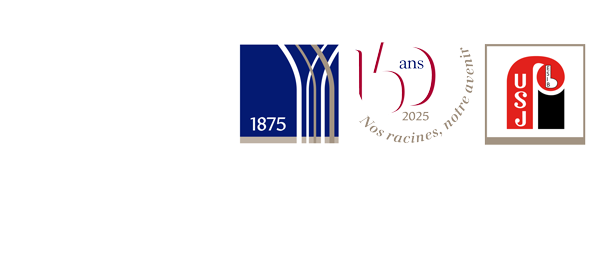Projets de Recherche
Dynamic Behavior and Structural Life Extension of Wind Turbines Using Composite Material
Description :
Wind turbines are considered as one of the most used renewable energy sources that is spread all over the world in order to generate electricity. The main load that is exerted on the wind turbine is the wind load, however other loads may occur such as impact and seismic loadings. Then, it is important to study the structural behavior of a wind turbine due to hazardous loads such as seismic and impact loadings, and to improve its dynamical behavior by using composite material. As a result, any improvement in the dynamic behavior of the wind turbine structure will obviously upgrade the structural life time and using composite will have a great benefit to resist environmental degradation. This work will be conducted in cooperation with Dr. Chantal Maatouk from the department of electricity and mechanics of Saint Joseph University to benefit from her expertise in renewable energy and namely in wind turbines and Dr. Samir Moustapha from the mechanical engineering department of the American University of Beirut (AUB) where his expertise in the domain of structural health monitoring will be an added value in addition to the benefit from the experimental tools available at AUB that can be employed to support the numerical study with experimental results for validations. The work will be carried out through the following phases. Phase 1 will be considered as a literature review that consists in exploring the different types of wind turbines and their components in addition to their dimensions, physical, and mechanical properties. Also, the different types of wind turbine’s supports and the wind loads should be defined. Also, additional literature review is needed for the fatigue analysis, different types of composite materials, their properties and behaviors. In phase 2, the wind turbine can be modeled as a single degree of freedom system in order to predict its response to impact and base excitations taking into consideration the different types of supports and the non-linear behavior of the soil surrounding the foundation of the wind turbine’s pole. The pole can be considered firstly as Euler Bernoulli’s beam and then as Timoshenko beam in second model. Fatigue analysis will be then performed in order to predict the life time due to wind loading. In phase 3, one can rely on experimental published results obtained from experiments on offshore wind turbines to validate the numerical modeling. In phase 4, the pole of the wind turbine can be wrapped with composite sheets and then single degree of freedom model can be used in order to evaluate its new structural behavior and the impact of such retrofit material. Phase 5 consists in replacing the entire metallic pole by a composite pole, then the structure is remodeled with the new composite material and the response of the new structure will be determined and evaluated. Phase 6 can be dedicated for dynamic experiments, fatigue testing, data collection and treatment. This phase can be placed after phase 1 or can be performed at intermittent periods based on the availability of the equipment and the progress of the work. In phase 7, comparison between experimental and numerical results will take place. It could be also a good PhD subject to be proposed for the coming academic year.
Titulaire :SHAER (AL) Ali
Contact USJ :
ali.shaer@usj.edu.lb
Chercheur(s) :
M. Ali SHAER (AL)
Mme Chantal MAATOUK
Projet présenté au CR, le : 01/09/2023
Projet achevé auprès du CR : 01/09/2025

